Health Care > EXAM > Portage Learning BIOD 151 All Lab exams- 100 Percent Grade (All)
Portage Learning BIOD 151 All Lab exams- 100 Percent Grade
Document Content and Description Below
1. Susan Smith is a participant in an Anatomy and Physiology lab class. Susan walked into lab today carrying a bagged lunch that she brought to eat following class. She has long blonde hair that is ... not pulled back. Today in class, you are reviewing basic microscopy and you notice that Susan’s microscope is partially hanging off the edge of her lab bench. Given what you learned from the lab video, list two lab safety concerns you notice in the above scenario. Susan brought food into the lab; Susan did not pull her hair back; Susan does not have the microscope safely secured on the lab bench. 2. Describe the position of a subject’s body when they are in anatomical position. When a person is standing in anatomical position, they are standing upright with feet flat on the ground. Head is facing forward. Arms are at the sides with palms facing forward. 3. Which of the following planes best describes the above image? a. Frontal Plane b. Sagittal Plane c. Mid-Sagittal Plane d. Transverse Plane c. Mid-Sagittal Plane 4. Which of the following planes best describes the above image? a. Frontal Plane b. Mid-Sagittal Plane c. Sagittal Plane d. Transverse Plane a. Frontal Plane 1. When comparing the relationship of the eyes to the occipital (back portion) region of the head, which of the following terms best describes the occipital region? a. Ventral b. Dorsal c. Anterior d. Posterior e. a. and c. f. b. and d. f. b. and d. 2. When looking at the body in anatomical position, which of the following statements best describes the relationship of the legs to the ribs? a. The legs are distal to the ribs b. The legs are inferior to the ribs c. The legs are lateral to the ribs d. The legs are superficial to the ribs b. The legs are inferior to the ribs 3. When looking at the body in anatomical position, which of the following statements best describes the relationship of the trunk to the arms? a. The trunk is medial to the arms b. The trunk is proximal to the arms c. The trunk is lateral to the arms d. The trunk is superficial to the arms a. the trunk is medial to the arms 4. When looking at the body in anatomical position, which of the following statements best describes the relationship of the knee to the ankle? a. The knee is distal to the ankle b. The knee is superior to the ankle c. The knee is proximal to the ankle d. b. and c. e. none of the above are correct statements d. b. and c. 5. A surgeon is about to perform surgery and directs his OR team to place the patient in the supine position. Describe what the supine position is. The supine position is lying on the back, face upward. 1. The crus is part of which skeletal division? a. The axial division b. The appendicular division c. Neither division b. The appendicular division 2. Which of the following statements is false? a. The two main body cavities are the dorsal and ventral cavities. b. The thoracic cavity contains 2 subdivisions. c. The ventral cavity can be subdivided into the thoracic and abdominopelvic cavities. d. All of the statements are true statements. b. The thoracic cavity contains 2 subdivisions. (It contains 3 subdivisions.) 3. Which of the following lines the lungs? a. The parietal pleura b. The meninges c. The visceral pleura c. The visceral pleura 4. Which of the following is a true statement? a. Inflammation of the pleural lining is referred to as pleurisy. b. Inflammation of the pericardium is referred to as carditis. c. a. and b. d. None of the statements are true. a. Inflammation of the pleural lining is referred to as pleurisy. 5. Describe what the term “retroperitoneal” means and give an example of a retroperitoneal organ. Retroperitoneal organs are located between the peritoneum and the dorsal body cavity. Examples include the kidneys, portions of the pancreas, the adrenal glands, and portions of the digestive organs. Retroperitoneal means situated behind the peritoneal cavity, between the peritoneum and dorsal cavity. An example of a retroperitoneal organ is kidney. 1. Describe the proper way to carry a microscope. You should always carry a microscope by placing one hand under the base while the other hand braces the arm. 2. What portion of the light microscope adjusts the amount of light that passes through the light source? a. The illuminator b. The oculars c. The diaphragm c. The diaphragm 3. Which knob is the instructor adjusting in the above picture? The mechanical stage control knob. [Show More]
Last updated: 1 year ago
Preview 1 out of 35 pages
Instant download
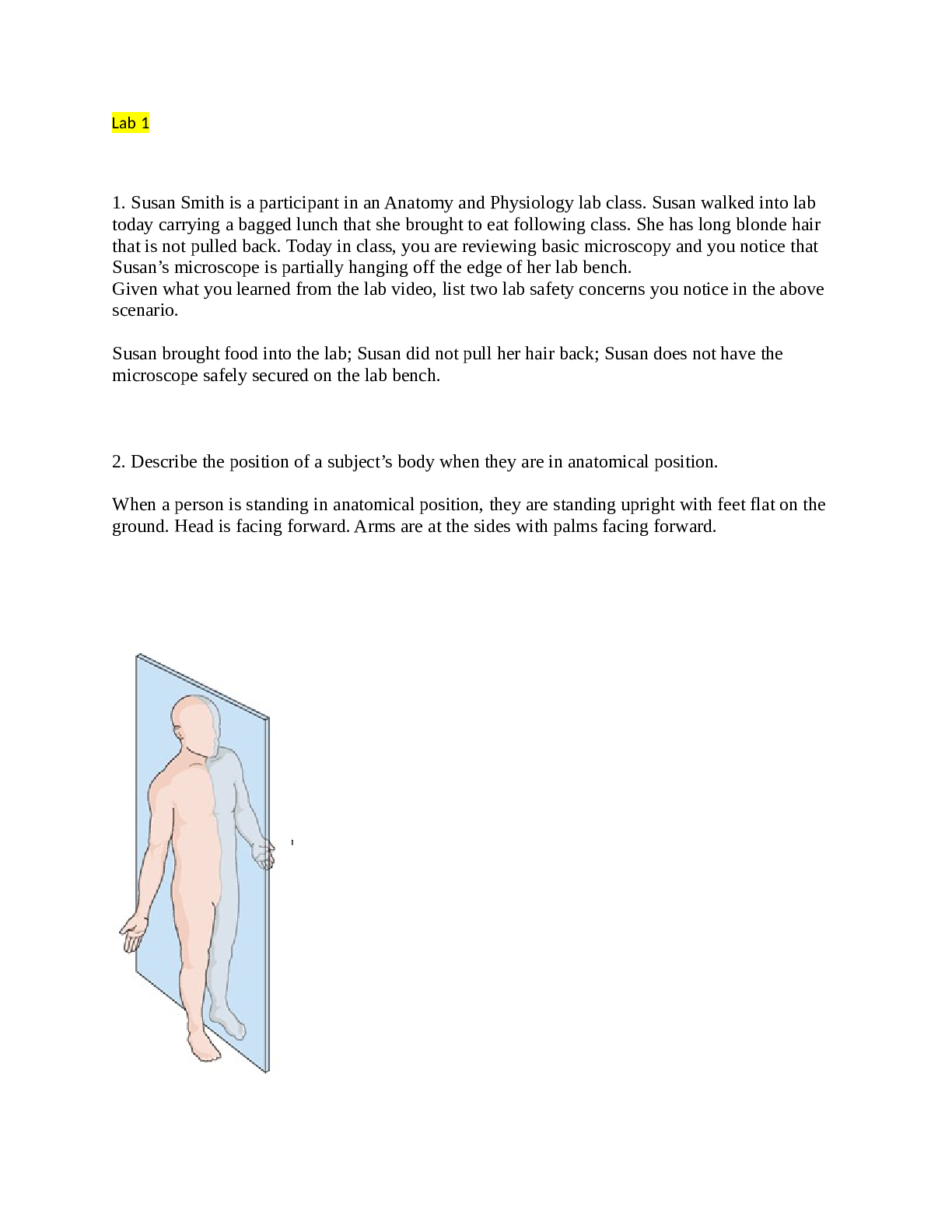
Buy this document to get the full access instantly
Instant Download Access after purchase
Add to cartInstant download
Reviews( 0 )
Document information
Connected school, study & course
About the document
Uploaded On
Sep 23, 2021
Number of pages
35
Written in
Additional information
This document has been written for:
Uploaded
Sep 23, 2021
Downloads
0
Views
27

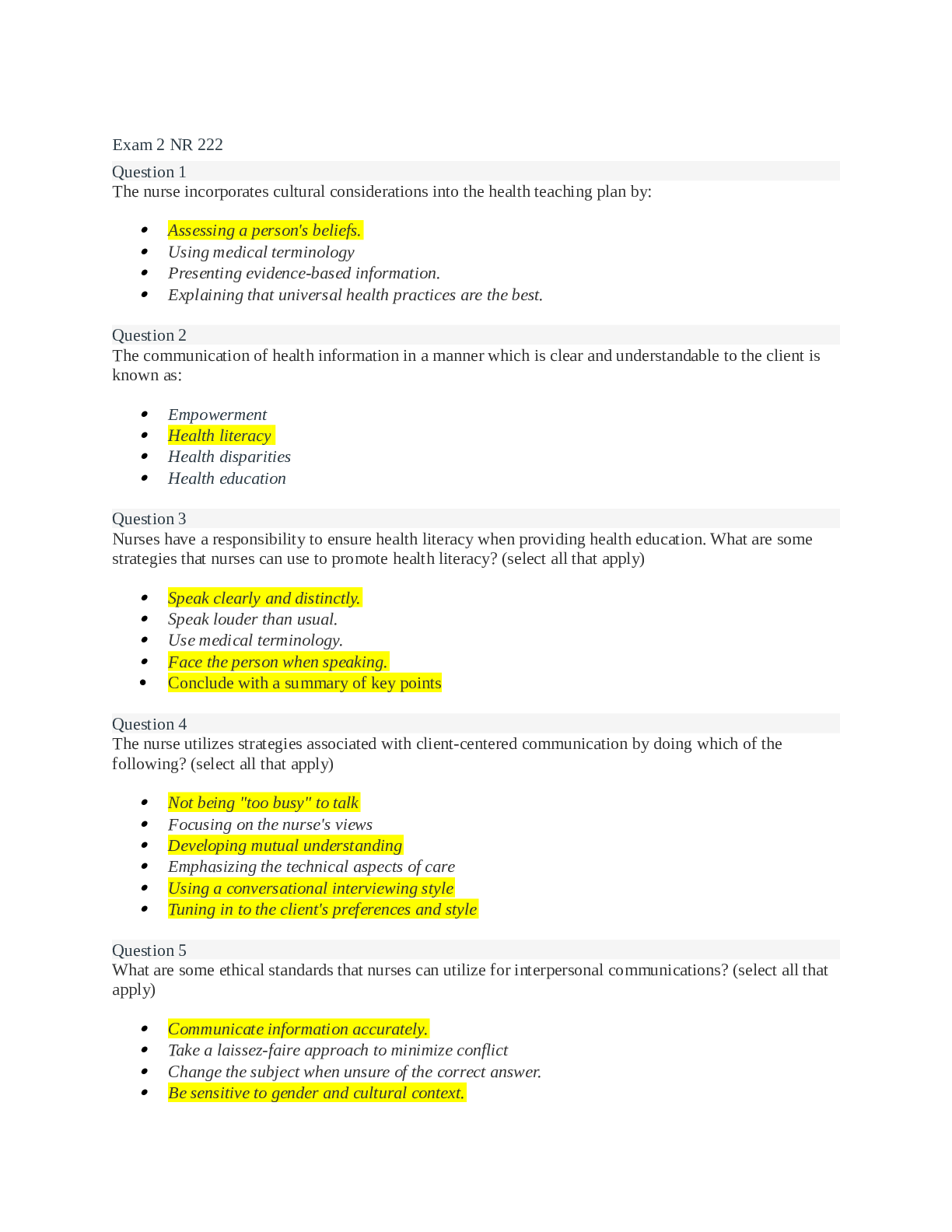

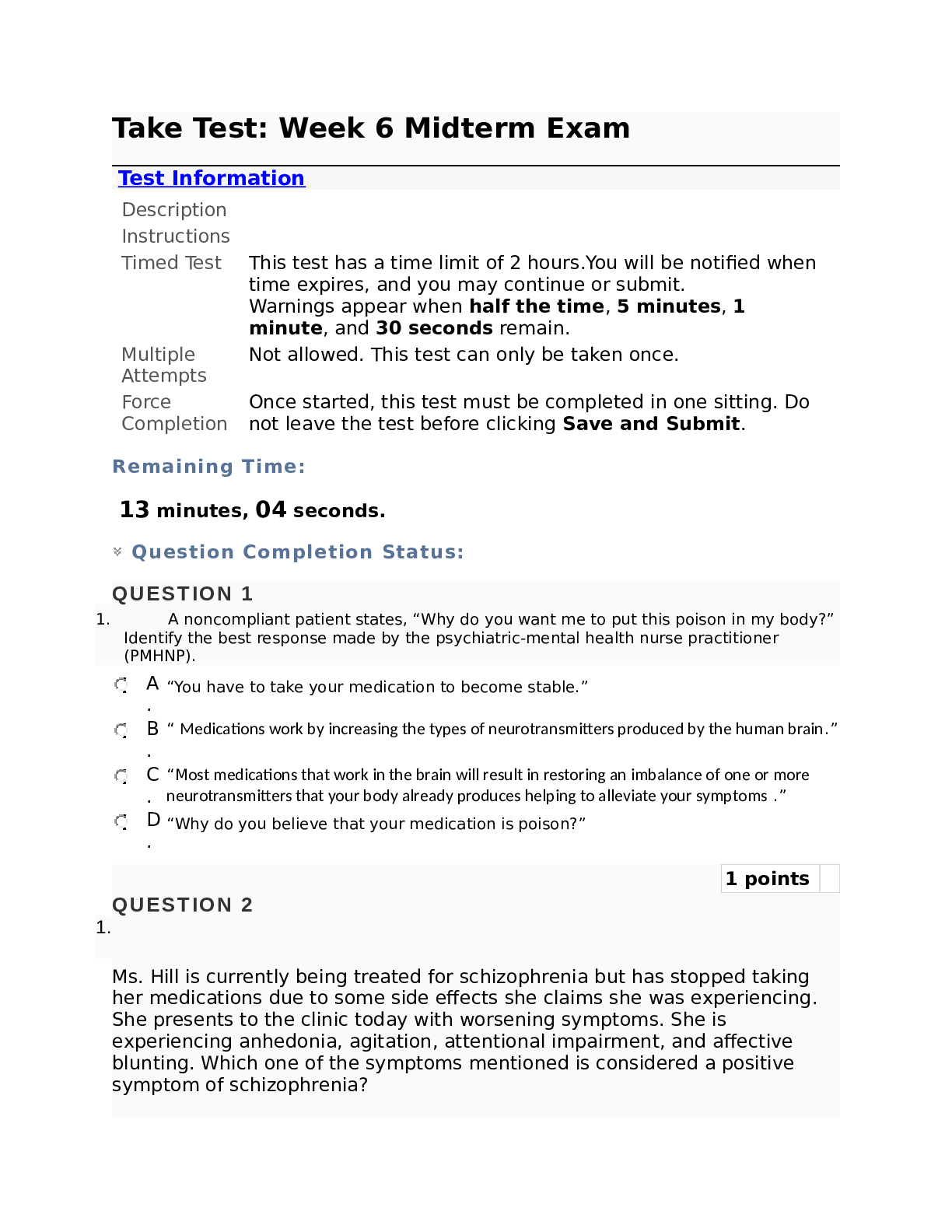
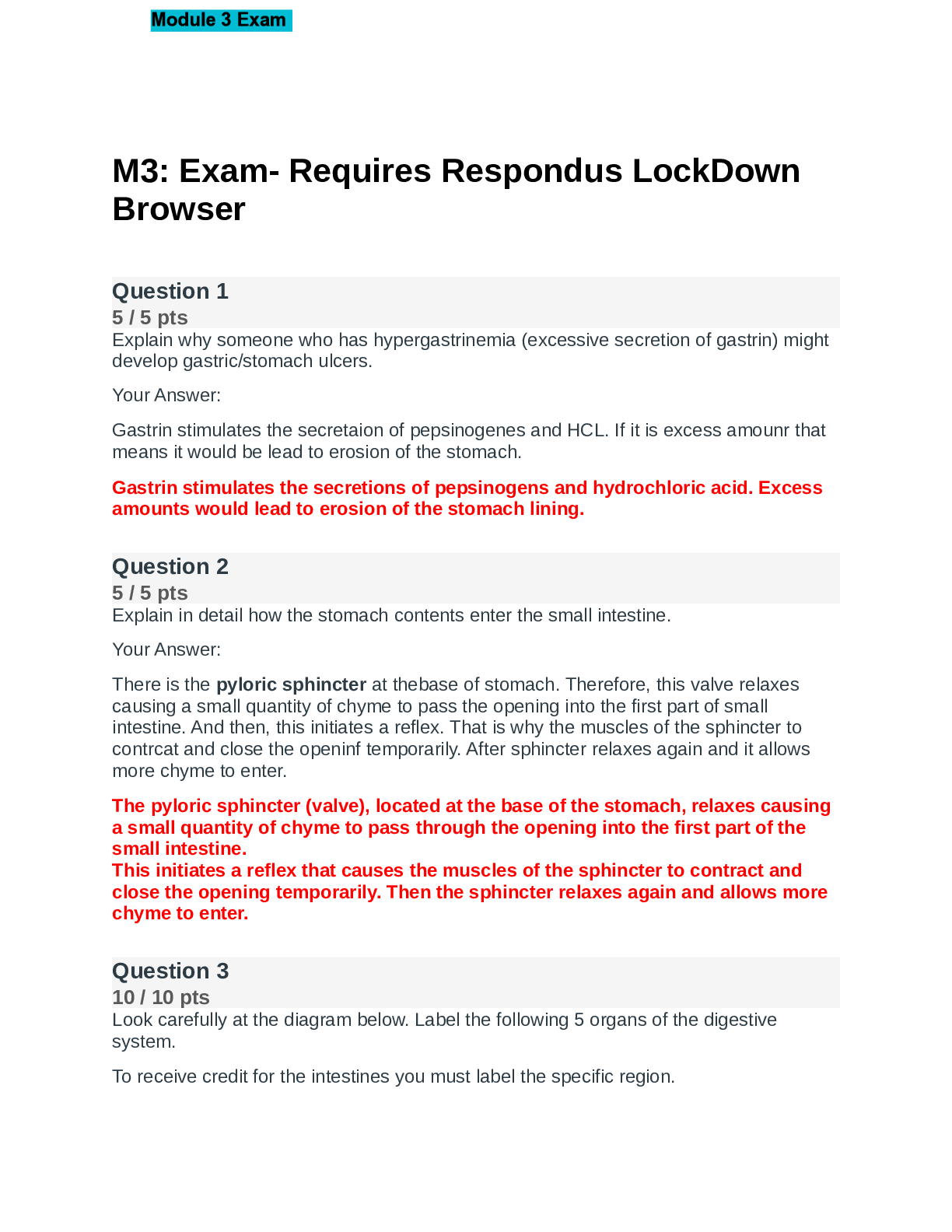




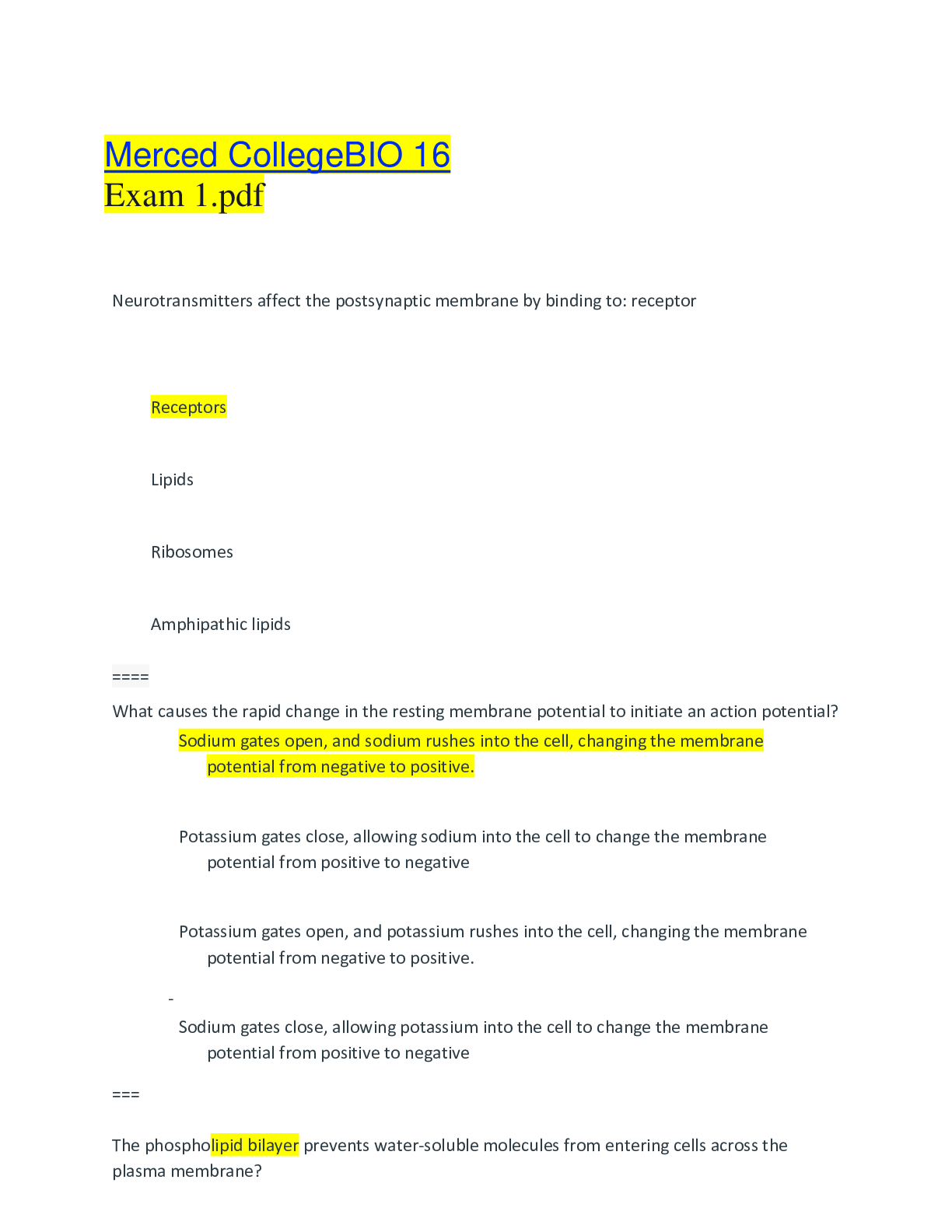






.png)


